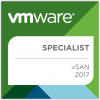Reading Time: 2 minutesVMware has released a new version of vCloud Director: this is a major release with version number 9.0. All related documentation has now been moved to VMware Docs website: https://docs.vmware.com/en/vCloud-Director/index.html. So vCloud Director is still alive and still the first (and actually only) choice, using VMware products, for service providers. Actually vRA is not yet able to replace it in this special use case.
Browsing Posts published in September, 2017
Reading Time: 2 minutesAfter a technical preview period and the official announce, now both VMware Workstation 14 and VMware Fusion 10 are available for the download. This is a good news, considering that one year ago there were some rumors and doubts about the future of Workstation and Fusion product, due to the laying off some employees from the related teams.

Reading Time: 2 minutesSeems that nested virtualization is becoming popular on public cloud: first with Ravello, this year also on Azure, and now Google Compute Engine supports nested virtualization in beta. This feature allows you to run one or more virtual machines inside a Compute Engine Linux virtual machine by leveraging Intel VT-x, processor virtualization instructions, to deliver better performance than what’s possible with alternative technologies like emulation.
Reading Time: 3 minutesIn a VMware infrastructure, when you build a new VM, the default compatibility level could depend on your vSphere version, from which client you are using (the legacy vSphere Client does not ask for VM virtual hardware version in the default wizard), but also from your cluster settings. VM virtual hardware version defines exactly the compatibility level, but you can define the default level using the vSphere Web Client or the new HTML5 Client.

Reading Time: 4 minutesDuring the last VMworld EU, on Monday I’ve tried the new VMware vSAN 2017 Specialist exam, just to see how difficult was and which kind of contents where covered by the exam. This specialist exam it’s something outside the traditional VMware certification paths, but it’s classified in the Certification Related Badges that includes different types of accreditations:
Reading Time: 5 minutesNow also VMworld EU 2017 is concluded, so finally it’s possible to give the takeovers of this event, there was something new compared to VMworld US 2017? Let’s start from the general sessions that where unfortunately too much similar (in some part identical) as the US edition… have two events so close (just two weeks of distance) is not useful at all, and the risk is to make the EU edition just a reply of the other… It’s already the small brother, but make it also a copy it’s a risk. Fortunately, the next year, […]
Reading Time: 6 minutesUsually when you upgrade to a new version of a product you may need also a new license key for it. But it’s not always true. For most of VMware’s products (for example VMware vSphere) a new license key is needed ONLY if you change the major number.










